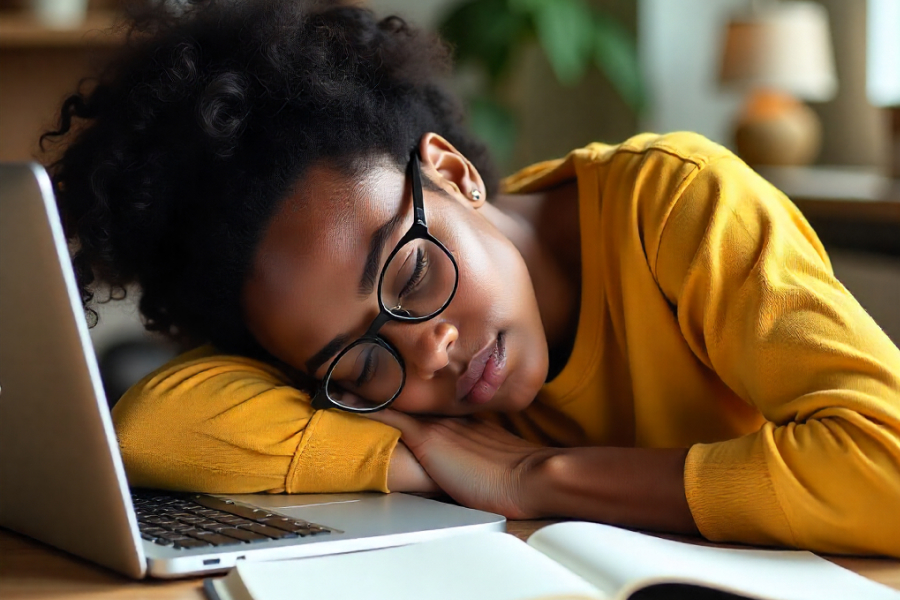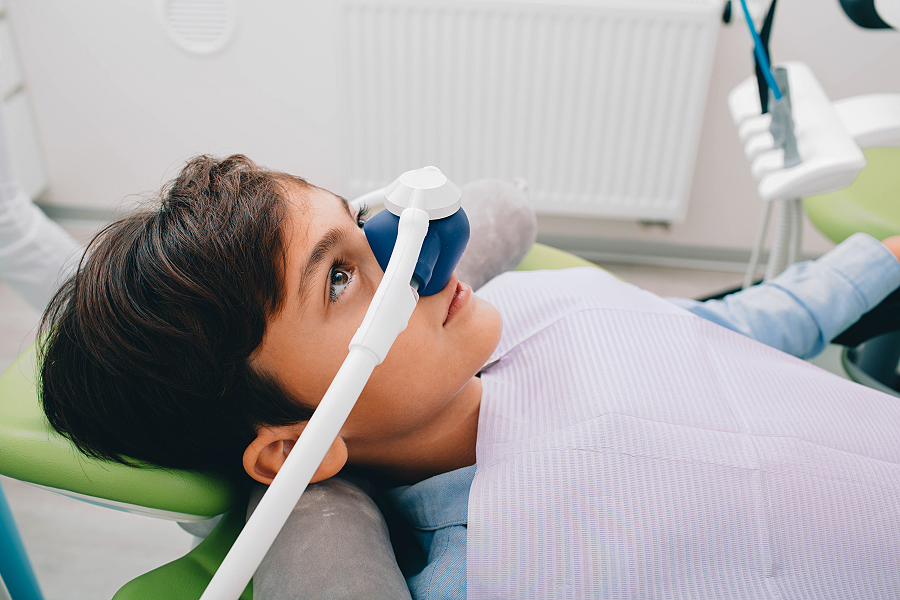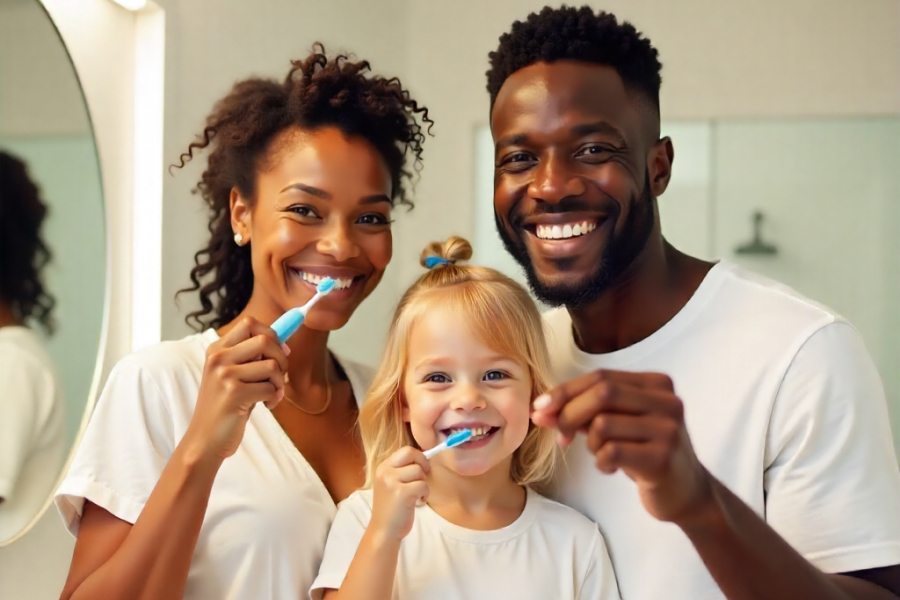Safe Sleep Solutions for Children: Pediatric Sleep Devices Explained
As a parent, ensuring your child gets quality, safe sleep is one of your top priorities. Most children will experience sleep difficulties at some point, and many face challenges related to common sleep disorders such as sleep apnea, insomnia, or parasomnias. Ensuring that children get enough sleep is crucial for their overall health, behavior, and development. When children experience sleep difficulties—whether from sleep apnea, restless sleep, or other sleep disorders—pediatric sleep devices can offer effective solutions. However, navigating the world of children’s sleep treatment requires careful consideration of safety, age-appropriateness, and medical guidance.

Introduction to Pediatric Sleep Disorders
Pediatric sleep disorders are a widespread concern, affecting children from infancy through adolescence and impacting families across the globe. According to the American Academy of Sleep Medicine, nearly one in four children will experience some form of sleep disorder during their development. These conditions—ranging from obstructive sleep apnea and insomnia to delayed sleep phase syndrome—can disrupt a child’s ability to get restorative sleep, leading to challenges in physical growth, emotional wellbeing, and cognitive performance. Recognizing the signs and understanding the causes of pediatric sleep disorders is crucial for parents, caregivers, and healthcare professionals. Early identification and intervention, guided by sleep medicine specialists, can make a significant difference in a child’s quality of life and long-term health outcomes.
Understanding Pediatric Sleep Challenges
Children’s sleep needs differ significantly from adults, and their developing bodies require specialized approaches to sleep treatment. Common pediatric sleep issues include obstructive sleep apnea, central sleep apnea, restless leg syndrome, various sleep-related breathing disorders, and pediatric sleep disordered breathing. Unlike adult sleep problems, pediatric sleep disorders can significantly impact growth, development, cognitive function, and behavioral health.
Safe sleep solutions for kids must account for smaller airways, developing facial structures, and the unique physiological needs of growing children. Sleep duration requirements vary for different ages, with younger children needing more sleep to support healthy growth and development, making it crucial to meet these needs. This is why pediatric sleep devices require specialized design, careful sizing for younger children, and ongoing medical supervision.
Types of Sleep Disorders
Children can experience a variety of sleep disorders, each with its own set of symptoms and challenges. Obstructive sleep apnea is one of the most common, characterized by repeated episodes where a child’s airway becomes partially or completely blocked during sleep, causing breathing pauses and frequent awakenings. Insomnia in children often presents as trouble falling asleep or staying asleep, and may be linked to stress, anxiety, or poor sleep hygiene. Delayed sleep phase syndrome is another frequent issue, where a child’s natural sleep schedule is shifted later, making it difficult to fall asleep and wake up at conventional times. Other conditions, such as restless legs syndrome and periodic limb movement disorder, can cause uncomfortable sensations or involuntary movements that disrupt sleep onset and maintenance. Understanding these different sleep disorders is the first step toward finding effective solutions and improving your child’s sleep quality.
Child Sleep and Development
Quality sleep is fundamental to every aspect of a child’s development. During sleep, the body undergoes essential processes that support physical growth, brain development, and emotional regulation. Sleep patterns and needs evolve as children grow: infants may require up to 16 hours of sleep per day, while older children typically need between 9 and 11 hours each night. Establishing a consistent sleep schedule, maintaining a calming bedtime routine, and creating a supportive sleep environment are all key to fostering healthy sleep habits. Good sleep hygiene—such as limiting screen time before bed and encouraging relaxing activities—can help children of all ages develop positive sleep patterns that support their overall health and wellbeing.
Importance of Good Sleep Hygiene
Practicing good sleep hygiene is one of the most effective ways to help children fall asleep and stay asleep through the night. This starts with setting a regular sleep schedule, ensuring your child goes to bed and wakes up at the same times each day, even on weekends. Creating a relaxing bedtime routine—such as reading a book or taking a warm bath—signals to the body that it’s time to wind down. The sleep environment should be quiet, dark, and cool, free from distractions like televisions, computers, and mobile devices. Avoiding caffeine and other stimulants in the hours leading up to bedtime can also make a big difference. By prioritizing these good sleep hygiene strategies, parents can help their children develop healthy sleep habits that lead to better sleep outcomes and improved daytime functioning.
Creating a Sleep-Conducive Environment

A sleep-conducive environment is essential for helping children achieve restful, uninterrupted sleep. Start by making the bedroom as dark and quiet as possible—blackout curtains can block out light, while white noise machines or earplugs can minimize disruptive sounds. Keep the room cool and comfortable, and remove electronic devices that might tempt your child to stay awake. Encourage calming activities before bed, such as gentle stretching or listening to soothing music, to help your child relax and transition smoothly into sleep. By thoughtfully designing the sleep environment, you can support your child’s ability to fall asleep, stay asleep, and wake up feeling refreshed, setting the stage for healthier sleep habits and better overall health.
FDA-Approved Pediatric Sleep Devices
Continuous Positive Airway Pressure (CPAP) for Children

Pediatric sleep devices like CPAP machines represent the gold standard for treating childhood sleep apnea, clinically known as obstructive sleep apnea syndrome. Modern pediatric CPAP systems feature:
- Child-specific masks: Smaller, softer interfaces designed for developing facial features
- Lower pressure ranges: Calibrated for children’s respiratory needs
- Fun designs and colors: Making treatment more appealing for young patients
- Advanced humidification: Preventing dryness and irritation in sensitive airways
CPAP therapy can also help reduce night wakings that are commonly associated with sleep apnea in children.
Safety considerations include proper mask fitting, regular equipment cleaning, and consistent pressure monitoring by healthcare providers.
Bilevel Positive Airway Pressure (BiPAP)
For children who struggle with traditional CPAP therapy, BiPAP devices offer variable pressure settings that can improve comfort and compliance. These devices provide different pressures for inhalation and exhalation, making breathing feel more natural for pediatric patients. In cases where children have comorbid conditions such as chronic insomnia and standard therapies are insufficient, BiPAP may be considered as part of a comprehensive treatment approach.
Adaptive Servo-Ventilation (ASV)
In select cases involving central sleep apnea, ASV devices can provide sophisticated breathing support. Excessive daytime sleepiness may be a sign of complex sleep apnea that requires advanced interventions like ASV. However, these are typically reserved for complex cases and require intensive medical monitoring.
Non-Invasive Safe Sleep Solutions
Positional Therapy Devices
For children whose sleep apnea worsens in certain sleeping positions, specialized positional therapy devices can encourage side-sleeping. These devices may also help reduce night waking in children with sleep-disordered breathing or related sleep disorders. These include:
- Pediatric sleep positioners: Designed to maintain safe sleep positioning
- Wearable positional devices: Small, comfortable sensors that provide gentle feedback
Nasal Devices and Dilators
External nasal dilators and pediatric nasal strips can improve airflow for children with nasal congestion or structural issues. These devices can help alleviate sleep disturbance caused by impaired nasal breathing, improving overall sleep quality. They are particularly useful for temporary relief during illness or as adjunct therapy.
Oral Appliances for Adolescents
For older children and teenagers, custom-fitted oral appliances may be appropriate. These devices reposition the jaw and tongue to maintain open airways during sleep. Oral appliances may also be considered for adolescents experiencing insomnia symptoms related to airway obstruction. They require:
- Dental evaluation and custom fitting
- Regular follow-up appointments
- Monitoring for dental changes during growth periods

Age-Specific Safety Guidelines
Infants and Toddlers (0-2 years)
- Never use adult sleep devices on infants or toddlers
- Focus on safe sleep environment practices
- Night wakings are common in infants and toddlers and should be addressed with safe sleep practices.
- Any breathing concerns require immediate pediatric consultation
- Avoid over-the-counter sleep aids or devices not specifically designed for this age group
Preschoolers (3-5 years)
- Children sleep treatment at this age requires specialized pediatric equipment
- Mask fitting becomes crucial as facial features develop
- Parent supervision and positive reinforcement are essential for compliance
- Regular size adjustments needed as children grow
Trouble sleeping is frequently reported in preschoolers and may require behavioral interventions to help establish healthy sleep habits.
School-Age Children (6-12 years)
- More treatment options become available
- Children can participate more actively in their care
- Educational approaches help improve compliance
- Peer and social considerations become important
- Establishing a consistent usual bedtime is crucial for improving sleep quality and supporting healthy circadian rhythm regulation in school-age children
Adolescents (13+ years)
- Treatment approaches may transition toward adult-style devices
- Body image and social concerns require sensitive handling
- Adolescents are at increased risk for circadian rhythm disorders and may require tailored interventions, such as behavioral strategies or pharmacological options, to help resynchronize their sleep-wake cycle.
- Independence in device management can be gradually introduced
- Orthodontic considerations become more complex
Critical Safety Considerations
Medical Supervision is Non-Negotiable
All pediatric sleep devices require prescription and ongoing medical supervision. Clinical sleep medicine plays a crucial role in the supervision and management of these devices, ensuring specialized care for accurate diagnosis, treatment, and follow-up. This includes:
- Initial sleep study and diagnosis
- Device selection and sizing by qualified professionals
- Regular follow-up appointments for adjustment and monitoring
- Immediate medical consultation for any concerning symptoms
Home Safety Protocols
Parents should establish comprehensive safety protocols including:
- Daily equipment inspection: Checking for wear, damage, or malfunction
- Proper cleaning routines: Following manufacturer guidelines for hygiene
- Emergency procedures: Knowing how to respond if devices malfunction
- Backup plans: Having contingency measures for equipment failure
Additionally, consider keeping a sleep diary to track device use and monitor your child’s sleep quality, bedtime, and sleep duration. This can help identify patterns and assist healthcare providers in diagnosing any sleep-related issues.
Red Flags Requiring Immediate Medical Attention
Contact healthcare providers immediately if your child experiences:
- Difficulty breathing or increased respiratory distress
- Skin irritation, pressure sores, or allergic reactions
- Sudden changes in sleep patterns or daytime behavior
- Equipment malfunction or unusual noises from devices
- Any signs of discomfort or fear related to treatment
- Sleep terrors, as these episodes can be a red flag for underlying sleep disorders and should prompt medical evaluation
Choosing the Right Solution
Professional Evaluation Process
The journey to finding appropriate safe sleep solutions for kids begins with comprehensive professional evaluation:
- Pediatric sleep specialist consultation
- Sleep study (polysomnography) conducted in child-friendly environments
- Multidisciplinary team assessment involving sleep medicine, pulmonology, and sometimes ENT specialists
- Family lifestyle and compliance assessment
Best practices for pediatric sleep evaluation are outlined in clin sleep med guidelines, which provide authoritative recommendations for clinical assessment and care.
Factors Influencing Device Selection
Healthcare providers consider multiple factors when recommending treatment:
- Age and developmental stage
- Severity and type of sleep disorder
- Facial structure and airway anatomy
- Family dynamics and support systems
- Child’s temperament and cooperation level
For example, pediatric insomnia may require different device selection or specific behavioral interventions tailored to the child’s needs.
Trial Periods and Adjustments
Most pediatric sleep treatments involve trial periods with frequent adjustments. Incorporating relaxation techniques can help children adjust to new sleep devices during this process. This process requires patience and close communication between families and healthcare teams.
Supporting Your Child Through Treatment
Creating Positive Associations

Help children view their sleep devices positively by:
- Involving them in the selection process when age-appropriate
- Using positive reinforcement and reward systems
- Creating bedtime routines that incorporate device use naturally
- Connecting with other families experiencing similar challenges
Sleep specialists recommend making the sleep device a normal and comforting part of the bedtime routine, which helps children develop positive associations and reduces resistance.
Addressing Common Concerns
Children may express fears or resistance to sleep devices. Address these concerns through:
- Age-appropriate education about their condition and treatment
- Gradual introduction of equipment during daytime hours
- Addressing comfort issues promptly with healthcare providers
- Maintaining open communication about their experiences
In some cases, if behavioral strategies are not effective, a sleep med may be considered as part of the treatment plan.
School and Social Considerations
As children grow, consider:
- Educating school personnel about sleep disorders and treatment needs
- Preparing for sleepovers and overnight activities
- Building confidence in managing their condition
- Connecting with support groups for children with sleep disorders
Insufficient sleep can negatively impact school performance and social activities, making it important for children and adolescents to follow their treatment plans.
The Future of Pediatric Sleep Medicine
The field of children sleep treatment continues to evolve with new technologies and approaches:
- Smaller, more comfortable devices designed specifically for children
- Smart monitoring systems that provide real-time feedback
- Improved materials that reduce skin sensitivity and improve comfort
- Telehealth capabilities for remote monitoring and support
In addition to device-based solutions, promising non-device interventions such as cognitive behavioral therapy and bright light therapy are being explored for their effectiveness in treating pediatric sleep disorders. Ongoing research in nat sci sleep is deepening our understanding of sleep mechanisms and disorders in children. Furthermore, sleep med rev offers comprehensive reviews of new sleep medications and device innovations, guiding best practices in pediatric sleep medicine.
Key Takeaways for Parents
When considering pediatric sleep devices for your child:
- Always work with qualified healthcare providers specializing in pediatric sleep medicine
- Prioritize safety over convenience in all treatment decisions
- Maintain realistic expectations about adjustment periods and compliance
- Stay actively involved in your child’s treatment plan
- Advocate for your child’s comfort and communicate concerns promptly
Remember that successful pediatric sleep treatment is a partnership between healthcare providers, parents, and patients. With proper medical guidance, appropriate device selection, and consistent support, children with sleep disorders can achieve the restorative sleep essential for healthy development.
Safe sleep solutions for kids exist, but they require careful implementation, ongoing monitoring, and unwavering commitment to safety protocols. All recommendations are focused on improving your child’s sleep and overall wellbeing. When in doubt, always consult with your child’s healthcare team to ensure the best possible outcomes for your child’s sleep health and overall wellbeing.
